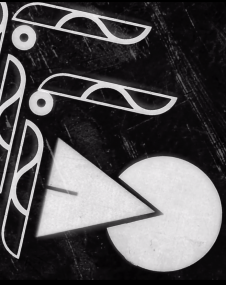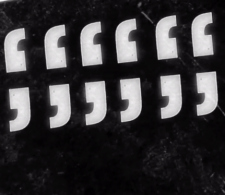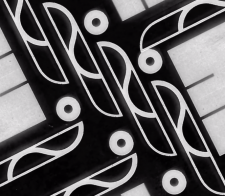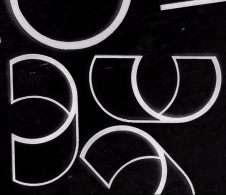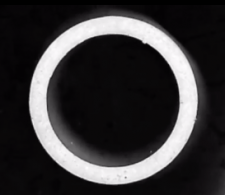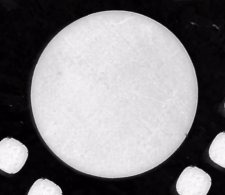Ideas are products of their environments. It’s no accident that when a new paradigm of media studies appeared on the scene going by the name of “media archaeology,” scholars were in the process of turning on their first smartphones and gawking at their friends’ new tablets. Media archaeology foregrounded the paths not taken, the dead ends and minor figures of media history – files and the phonautograph, optical toys and the Dynabook. These artifacts were historical lenses through which, if only indirectly, our inscrutable new gadgets could be seen in terms of what came before.
A decade later, digital devices are an embedded part of daily life. Far clearer are the changes they have introduced to politics, relationships, and our sense of the world around us. Smartphones are no longer curiosities or unknown quantities, they form privileged relationships with their users that can be characterized by sensuousness, intimacy, virtuosity, even fetishism. Perhaps for this reason, scholars are increasingly adopting approaches to the use of media technology, from philosophies of technique, habit, and know-how, to histories of neglected ideas like psychotechnics, the useful arts, and the chaîne opératoire.
This issue of Amodern profiles some of the many ways that scholars of media, technology, and culture are extending the object-orientation of media archaeology. What are the methods, terms, and concepts that have been useful in shifting our emphasis from tools to their applications? How do we describe the use of media and at what point do these descriptions take on an interpretive dimension? Continue reading…
Histories of Techne
Techniques of Scholarship and Textual Production
This essay experiments with using a specific site of scholarly and administrative labour as a platform for thinking about the coalescence of larger intellectual and cultural formations. The site is Canadian economic historian Harold Innis’s office in University of Toronto’s Department of Political Economy, ca. 1925-1952, and the formation is media theory. This isn’t an origin myth but an exercise in thinking about how techniques of managing information shape thinking, writing, and doing, and how they sometimes produce sparks of inspiration and influence.
Histories of Techne
While it is unlikely that the premise of a “computer science” would prompt any confusion or controversy today, perhaps it should. Following nearly two decades of anxiety over the status of this discipline, an influential textbook, Structure and Interpretation of Computer Programs (1980), declared that computer science “is not a science and that its significance has little to do with computers.” The proposed alternative – that it should instead be thought of as an elaboration of “procedural epistemology” – marks the tensions between artisanal and theoretical labor in which the activity of computer programming established its institutional legitimacy.
Histories of Techne
Challenges in Defining – and Teaching – Technology around 1800
Around 1800, as today, the role of technology in the classroom went well beyond the study and use of technical objects. As a science and an academic discipline, technology was notoriously difficult to define, given the inordinate number of tools, instruments, and practices it encompassed, and its connections to other disciplines. This essay introduces readers to writers of important technological treatises, such as Johann Beckmann and Georg Lamprecht, who struggled to apply a sound theoretical order to teaching an imperfect science. It also considers a connection between technological theory and an idealized classroom experience, both of which relied upon subsuming the manifold of technological parts within a single trained gaze.
Systematizing Technique
The Infrastructures of Weather Prediction
This essay addresses the cultural technique of the grid in the history of computational weather forecasting. First, I draw on the Kulturtechniken school of German media theory to establish the grid as a media technique for linking visual representation, mathematical processing, and geopolitical order. I then trace the emergence of the grid in the 1922 work of early weather forecaster Lewis Fry Richardson. Finally, I apply these findings to a contemporary forecasting glitch around Hurricane Ophelia's landing on the British Isles in 2017. To put my argument succinctly: grid techniques enable weather prediction to make equivalent real atmospheres and virtual models, further enabling computation’s conceptual and material control over the planet itself.
Systematizing Technique
Logistical Media and the (Supply) Chaîne Opératoire
This article examines the techniques that constitute logistical operation, suggesting the application of the chaîne opératoire to the abstract structure of the supply chain. Building on a German media theoretical approach to “cultural techniques" and the idea of “logistical media,” it argues for assembly as an ur-mediative technique, one produced both before and beside attendant mediative functions of storage and transmission. Long before its instantiation in contemporary logistical systems, assembly emerged as a cultural technique in the ancient storehouse. In time, the abstract forms of mediation it produced made sites accessible as a virtual assembly—a development of critical importance to the instrumental operations of the global supply chain.
Systematizing Technique
This essay responds to an ongoing call to expand accessibility by proposing that captioning should not only be the labor of the one who makes an address but also those who can be addressed as a way to help provide accessible entries for those who might not. In short, to make captioning leverage the wide distribution of attention to what might be considered ambient, we propose to make captioning an ambient practice. A primary aim for ambient captioning is to cultivate a shared capacity for captioning as an ethic of accessibility.
Historical Dictionary of Media Usage
On the Usefulness of the Concept of Media Usage
Concepts of techniques and practices have figured prominently in German media studies of the past few decades. A recent encyclopedic project, the Historisches Wörterbuch des Mediengebrauchs [Historical Dictionary of Media Usage], provides an alternate approach that is perceptive to the less theorizable, more customary, yet creative and perhaps all the more significant uses of media technologies: their “Gebrauch” (i.e. German for “use,” “usage,” “practice,” and “custom” alike). Contextualizing the concept, the article introduces the dictionary, as well as the following three original translations from the project, and reflects on both its epistemological and pedagogical potential.
Historical Dictionary of Media Usage
A “Historical Dictionary of Media Usage” that takes itself seriously will have something to say on its own intended use. Translated from the Historisches Wörterbuch des Mediengebrauchs – a recent encyclopedic publication from Germany – these “Instructions for Use” consider the dictionary’s functionality in its own historical context and introduce the uniform heuristic structure that organizes its entries.
Historical Dictionary of Media Usage
Concepts of things come with an implied usage of those things. If, in this way, one understands language not as the original source of meaning and being, but as a vivid source of information on the continuous interplay between the usage of words and things, then language constitutes an important point of reference for media studies. Media usage has enmeshed the modern subject ever more tightly in its industrial environments – environments that were once described as “secondary systems.” Today, we experience forms of the technization of our environments that render the distinction of primary and secondary factors virtually impossible. Therefore, the etymologies of media usages, and likewise a technologically informed conceptual history, cannot be summarized, kept at bay, or arrested by means of theory. Instead, they want to be narrated in an open-ended array of case stories. These illustrative case stories interrelate, just like the things and activities described in them. As such, they promise to cast a new light on categories like contemporaneity and functioning, but also usage and object.
Historical Dictionary of Media Usage
The rich semantic field of the German‑language term bilden serves as a case study of the complex history of the connection between education and media/cultural technologies. First used in the technical context of craftsmanship (a potter making bowls), and then, from the 18th century onwards, in the context of art (the artist representing, giving form to the world and life experience), bilden means "to form, to give form" in German. From 1770 to 1830, in the context of Neo‑Humanism and Classicism, Bildung became a guiding principle for the individual and society, referring to the ideal of gaining a broad education as a human being, free of any specific or technical purpose. The semantic legacy in education of both dimensions of bilden – the technical and the idealistic — is visible within the 20th century and beyond in a variety of cases, from Sidney L. Pressey’s 1920s teaching machine, to the so‑called ‘language labs’ of the 1950s‑70s, to the contemporary phenomenon of MOOCs (Massive Open Online Courses).
Case Studies in Technique
This essay tells the story of a technological arrangement that asks marginalized people to do the work of managing information networks. It offers a way of understanding the epic history of communication infrastructure and the labor required to maintain it. That labor is best understood in terms of the rhetorical technique of epicrisis, the quotation of a passage followed by commentary on it. Epicrisis is a metaphor for mediation itself: the message is passed along, but it is also affected and shaped by the medium. From telephone operators to Twitter users, epicrisis has served as a crucial, inventive, and persistent technique for managing unjust information infrastructures.
Case Studies in Technique
Techniques of Secret Storage, From Desks to Databases
Ours is an age of leaks and hacks and fakes. Yet we are not alone in our concern with security and secrecy. Many historians have described the 18th century as an age of secrets – of espionage and secret societies, of new forms of private writing and intimate sartorial storage. This desire for discretion also informed, and was informed by, new techniques of organizing space. I focus here on how historical techniques in cabinetry and locksmithing generated furnishings that served as encryption devices requiring specialized knowledge for their operation. I then examine how contemporary cybersecurity often relies on furniture-related metaphors – lockboxes, crypts, keys – and ask what it means for digital devices to take cues from their wooden forebears.
Case Studies in Technique
Xenakis’s UPIC, Disability, and Avant-gardism
In 1977, the composer Iannis Xenakis developed a music composition interface he claimed would democratize music production – making it "simple" and "intuitive" to all. To demonstrate the system's inclusivity, Xenakis held workshops with blind people – also testing their presumed gift to produce avant-garde music. Drawing on archival evidence and interviews, I argue that the rhetoric surrounding his interface naturalized the universal human capacity for musicality – problematically making it appear that all people can, and should, be able to compose. Furthermore, the system's design assumed able-bodiedness and placed vision as the primary sense required for composition. Nevertheless, his declarations helped contest the exclusive technocratic culture of music production in France at the time.
Case Studies in Technique
"Lessons in Queer Voice” looks into the technique of “queer speech” as a cure for stuttering in early twentieth-century speech pathology. This essay provides a brief catalog of miscellaneous queer voices from the time period, as described in singing and speech manuals, as well as in fiction. At a moment when homosexuality was undergoing medicalization, and “queer” was increasingly applied as a pejorative in the realm of sexuality, it turns out that medicine was far from internally consistent: different specialties disagreed about what made a voice queer; within a given specialty, certain impairments were preferable to others, and might even be employed therapeutically; social stigma did not always align with medical discourse.




